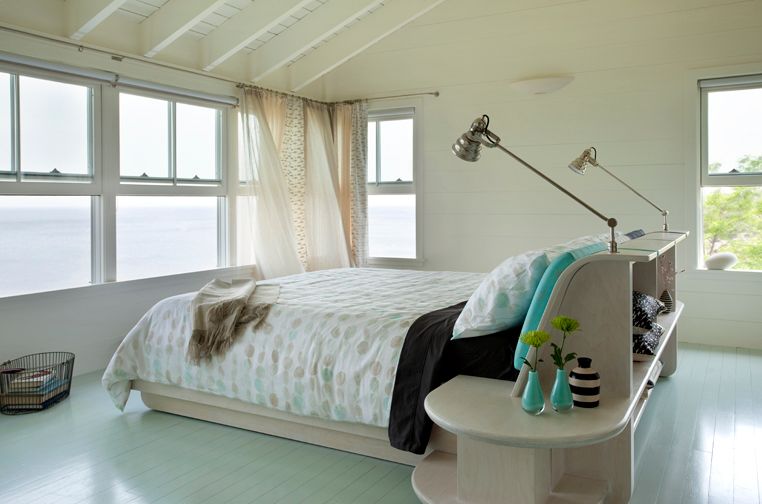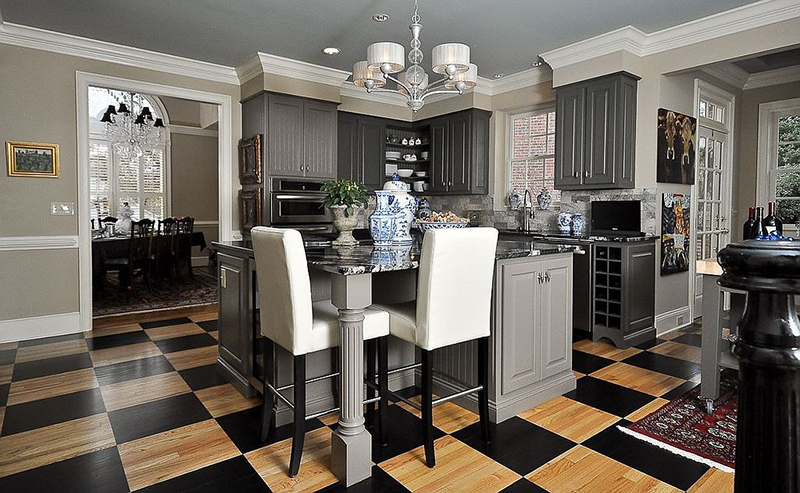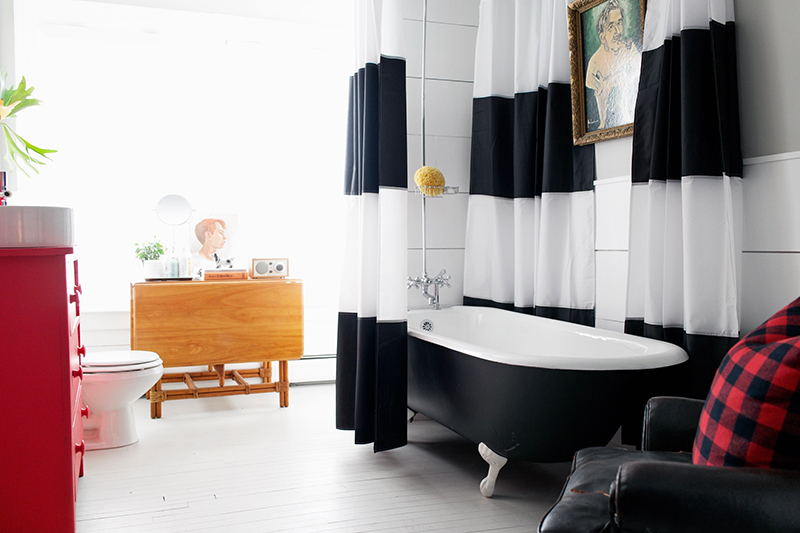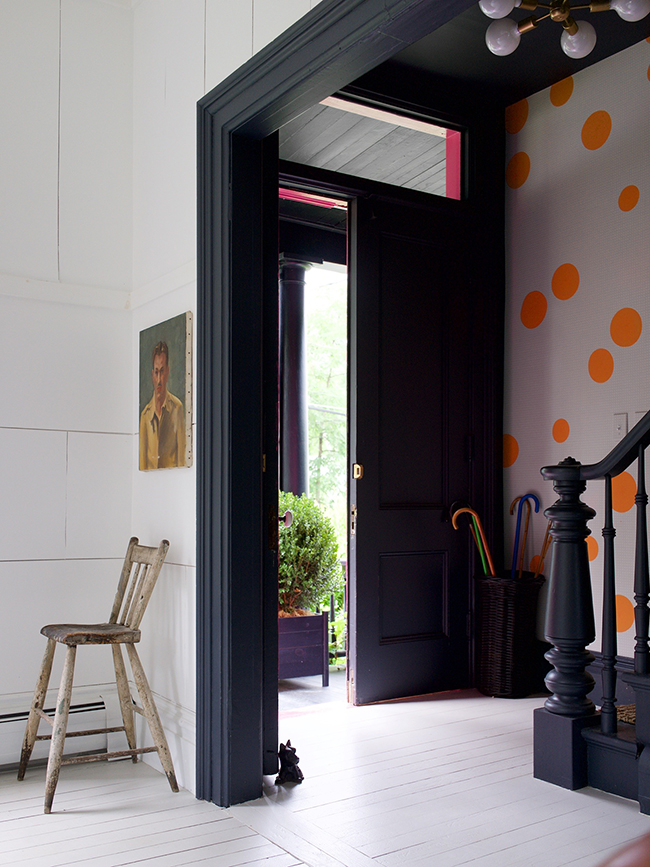You'll never see them do it on a TV design show. You won't hear a contractor propose it. And you sure won't find an aisle devoted to it at your home improvement store.
In fact, it feels a little bit naughty to talk about - almost a taboo. But you should consider it anyway: painting your wood floors.
I know it sounds crazy, but there are good reasons and a solid historical precedent for skipping refinishing in favor of paint.
Why paint your floors?
Style. We pretend that stained wood floors never go out of style, but they're just as influenced by design trends as the colors on your walls or the drapes in your living room.
Sure, midtone gray wood is popular now, but espresso was all the rage five years ago. Before that? Honey oak, cherry, and any number of other stain colors.
If your hardwood flooring isn't compatible with your home’s look, paint’s a great way to fix that. Dark or light tint, warm or cool hue - with paint, you can quickly align your floors with the rest of your decor.

Historic precedent. Painting a floor, particularly in an old home, may seem unusual today, but it was a common and preferred way to finish floors in the past.
Farmhouses from the 1800s, Victorian mansions, English estates - you’ll find painted floors in old homes ranging from rustic to ultra posh. It added color and protection to rooms and stairways prior to the development of modern wood sealants.

During the Victorian era, many homes were covered with paint. You can ascribe this explosion of color to the sudden mass-market availability of a wider range of hues.
Builders put those new colors to work on every surface, often adding detail to a room by painting borders or patterns on the floor. Kitchens were adorned with diamond-check patterns, stairways had contrasting runners, and upstairs bedrooms were coated in pale tints to brighten them and stave off winter gloom.

Practicality. Perhaps you're ready to concede that painted floors can give your home the look you want. Isn't it still smarter to refinish the wood?
Not necessarily! Floor refinishing is a major - and majorly messy - undertaking. Sanders throw dust everywhere, so rooms must be emptied, sealed off, and deep cleaned afterward. Plus, the subsequent staining and sealing takes days of applications and drying.
In comparison, painting a floor is a much quicker project - a light, low-dust sanding prior to priming, then one to two coats of paint that dry in mere hours.
Additionally, there are circumstances when paint offers superior performance. Old hardwood may have already been refinished multiple times, resulting in a floor too thin to survive another sanding. Because painting doesn't require that deep sanding, you can keep your floors rather than replace or cover them.
An opaque coating can mitigate other common problems in older homes. Many older floors were patched as walls were opened up, radiators were removed, or broken planks were repaired. Paint resolves the color and grain variations from patch jobs, leaving a cleaner, more polished end product.

Of course, when it comes to painted floors, the first concern people raise is scratching. But this is less of a problem than you might think.
Use primer and a tough grade of paint, and you’ll likely prevent scratching or chipping. Porch paint works well in high-traffic settings, and higher sheens will dry harder than matte sheens.

When you do get a scratch, you can quickly and seamlessly touch it up with a brush - something you definitely can't do with stained floors. And like stained floors, painted wood floors can be mopped and scrubbed, with no polish required!
A few tips on floor color
- Lighter is better. Brighter painted floors will reflect more natural light than brown wood.
- But not too light! Going with a true white floor can be a risky move. It will show every dark speck that drops onto the floor, along with grime and stains. Go a few shades darker to a pale gray for a similar, more practical effect.
- Black can be dramatic, but, like white, it will show dust. A deep charcoal is an effective compromise.
- Buttery yellows are traditional favorites for kitchens, mud rooms, and hallways.
- Need some interest in your formal living room or master bedroom? Try a deep green, merlot, or navy.
- Mix colors. Stick with a neutral for the bulk of the floor, and offset furniture with a colorful painted area rug. Or highlight the room’s edge with a wide stripe of color running against the baseboards.
Top image by Chris Stout-Hazard.
Related: